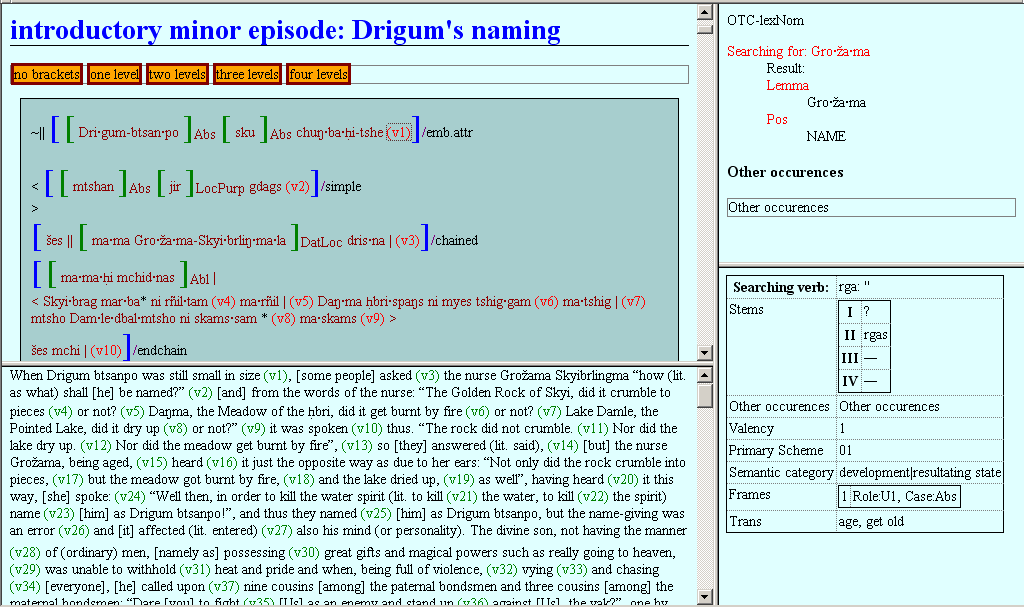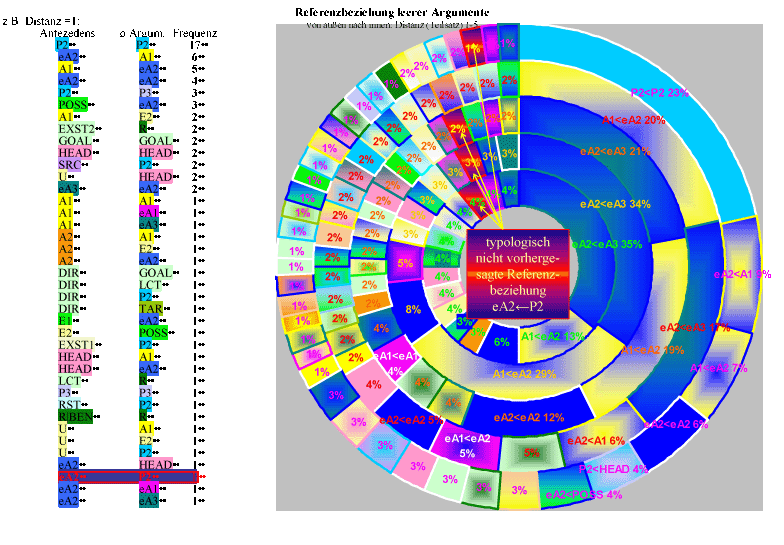
Project B11:
Semantic roles, case relations, and cross-clausal reference in Tibetan
|
||
|
||
|
||
|
||
|
||
|
||
|
||
|
Head 
| Prof.
Dr. Klaus Butzenberger Seminar für Indologie und Vergleichende Religionswissenschaft Universität Tübingen Gartenstr. 19 72074 Tübingen |
Prof. Dr. Marga Reis
(temporary) Deutsches Seminar Universität Tübingen Wilhelmstraße 50 72074 Tübingen |
| Tel.: +49/7071/29-76741 Fax: +49/7071/29-5321 E-Mail: mer AT uni-tuebingen.de |
Project team
| Dorothee Börner (2006-2008) Nathan W. Hill (2005-2006) Fabian Kliebhan (2007-2008) Kristin Meier (2002-2004) Frank Müller-Witte (2006-2008) Nicola Westermann (2005) Bettina Zeisler (2002-2008) E-mail: zeis AT uni-tuebingen.de |
|
| Consulting: Rebecca Norman (SECMOL, Students' Educational and Cultural Movement of Ladakh, Leh-Ladakh 194101, Indien) Namgyal Nyima (Zentralasiatisches Seminar, Universität Bonn) Thupten Kunga Chasab (Uniwersytet Warszawski) For all persons involved in the field work in Ladakh, see our special page people in the field. |
|
Objectives
The central concern of the project is the formulation of rules for the identification of antecedents of empty arguments in Tibetan. To this end, it will be necessary to deal with the particular verb semantics, i.e. the argument and event structure and the classification of the verbs according to their type of actor ([±control]), as well as with problems concerning ergativity and details of the Tibetan verb morphology. It is reckoned that the syntactic, pragmatic, and semantic rules for the identification of empty arguments can be weighed according to optimality criteria. Thus, the project aims at drawing up sets of rules for cross-clausal reference in Old Tibetan (mid 8th - end of 10th century), Classical Tibetan (11th - 19th century), and contemporary West Tibetan, spoken in Ladakh (India) and Baltistan (Pakistan). The categories of semantic roles and the semantic-syntactic case relations will no longer be derived from mere intuition, but on the base of the valency dictionary of Ladakhi verbs compiled in the first phase. Conversely, we expect that the study of reference relations will allow to delimit the semantic, pragmatic, and syntactic categories more precisely.The approach to the project is primarily empirical and descriptive, secondarily general comparative and theoretical. The project is based on the analysis of extended text corpora of written and oral narrative literature of different periods, on the analysis of data obtained through consultation and elicitation, as well as on the indigenous grammatical literature. Due to the various types of data (corpora, grammaticality judgements, elicitation, descriptive historical and recent data, as well as the normative data of Tibetan grammarians) and the combination of different methodological approaches (philology, linguistics, historical linguistics, and indigenous Tibetan grammar) the project contributes to the dominant line of research of the SFB 441: the investigation in the relationship between data and theory with respect to different types of data and their evaluation.
Further details can be found in our project proposal of the 2nd phase (.pdf-file, in German).
Annotation
documentationdefinition of elements
|
made
visible |
 |

Statistical
numbers & more |
|
Publications
Field work
Participants (narrators and consultants)a few particular results:
-
 Stone
flowers or an excursion into language archaeology (in Ladakhi Phalskat
and
English):
Stone
flowers or an excursion into language archaeology (in Ladakhi Phalskat
and
English):
"Language change and the fossilization of the Old Tibetan b- prefix in Ladakhi and Balti." Paper presented at the 12th Colloquium of the International Association for Ladakh, Kargil (Ladakh), 12-15th July 2005. Steinblumen oder ein spracharchäologischer Exkurs (auf Ladakisch und Englisch):
- Kenhat, a dialect group from Upper Ladakh
- Clause types (overview)
- Introduction to a Valency Dictionary of Ladakhi Verbs – work in progress
-
kuʃunaŋ trakuʃu (apples and peaches) – on the comparison of comparative expressions in structurally differing languages
Layout: Christoph Singer. Responsible for the content and contact: B. Zeisler. Last modified: 08.04.2009
